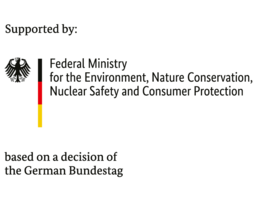Activities
LIFE WILDisland aims to establish a best-practice example for an EU ecological corridor, supported by the EU Commission and strategic partners such as the International Commission for the Protection of the Danube River (ICPDR), the EU Strategy for the Danube Region and the Ramsar Convention.
More than 70% of the LIFE WILDisland project budget will be invested into concrete conservation and restoration actions. The hydro-morphological regime of over 48 km of waterbodies will be improved. The river dynamics and hydrological regime will be restored on 437 ha. In addition to that, some 351,9 ha of natural floodplain forests will be improved through transformation of hybrid poplar plantations, reforestation, and invasive alien species management.
The project provides for the following actions:
Danube-wide WILDisland awareness and legal conservation campaign
Direct conservation and restoration actions:
- WILDisland Ramsar Regional Initiative
See map of LIFE WILDisland project actions here.
Danube-wide awareness and conservation campaign for the Danube Wild Island Habitat Corridor
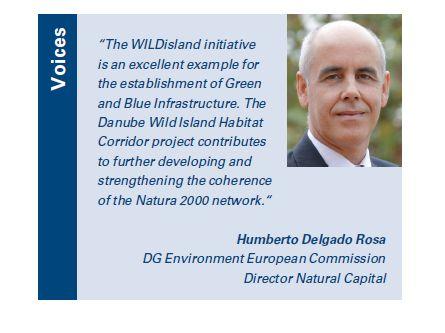
The WILDisland projects is designed as a unique initiative to contribute to the key commitments of the EU Biodiversity Strategy 2030, by enlarging protected areas, by establising strictly protected sites, by preserving primal forests, and by establishing EU Green Infrastructure along the most international river. It will help to raise awareness for the Danube islands as jewels of Danube nature.
The initiative is already recognized on policy level as best practice for transnational cooperation and a good example to strengthen ecological corridors.
Furthermore, with the support of the ICPDR, WILDisland sees itself as a showcase initiative and wants to be an impetus for the establishment of island corridors also on other major rivers in Europe, such as river Rhine and the Sava river.
The project provides for the following actions:
- establish the Danube WILDisland Ramsar Regional Initiative, in close cooperation with the Ramsar Secretariat and Ramsar Focal Points on national level;
- elaborate and gradually implement a Danube-wide conservation concept for 147 WILDislands category A (>14,000 ha) with a main focus on non-intervention management for these wilderness sites;
- gradually implement the Danube WILDisland Habitat Corridor in cooperation with Danube protected areas (see commitment on DANUBEPARKS Directors´ level, authorities), international organisations (IUCN, see A8 declaration) and policies (like EUSDR PA6), land managers and stakeholders (like waterway management, forestry);
- elaborate a work plan for the Danube WILDisland Ramsar Regional Initiative;
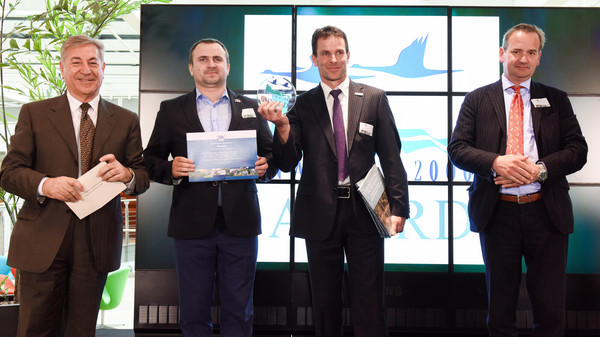
WILDislands on the interface with navigation
The Danube has been a significant European travel and trading route since early history. Currently a total of 2,415 km are used for navigation, connecting ten riparian states. Due to river regulation, ongoing sediment processes limit the habitat quality, the island character gets lost, while technical interventions – groins and embarkment aim to stabilize the river.
All these river engineering measures have an effect on the hydromorphological situation and the natural composition of ecological communities. At the same time the navigation sector has also started to recognize the mutual benefit of carrying out projects integrating waterway infrastructure and ecology.
As a result, actions, related to optimizing the waterway infrastructure for WILDisland restoration will be carried out to optimize Grey (navigation) infrastructure and initiate and restore islands.
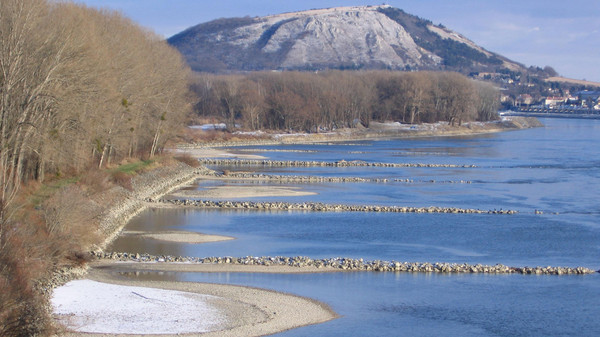
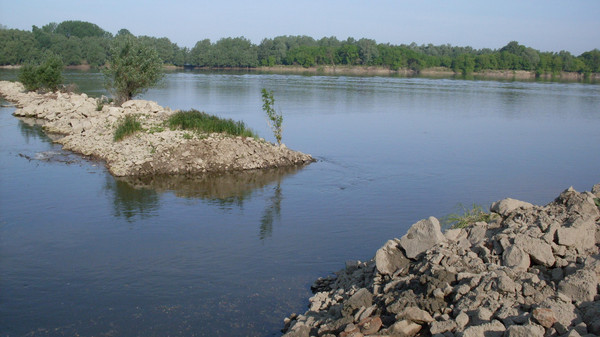
Actions will be carried out in the Upper and Middle Danube by viadonau, BROZ, FHNPD, DDNPD and aduvizig, as follows:
- Schwalbeninsel (viadonau, AT) - embankment removal and adaptation; groyne adaptation;
- Sap (BROZ, SK) - sidearm reconnection and dredging; reforetsation activities;
- Kližská Nemá (BROZ, SK) - groyne adaptation and dredging; natural forest rejuvenation;
- Erebe islands complex (FHNPD, HU) - groyne adaptation and dredging; invasive species eradication
- Korpadi islands (aduvizing, HU) - groyne opening; sidearm dredging;
The main objective is to improve river dynamics and form a highly dynamic island landscape. The improvement of the bank will provide shallow water habitats protected from the rapid current and wave stress, creating suitable area for juvenile fish and providing resting places for waterfowl. At the same time, this activity should demonstrate integrative management, combining nature conservation, flood protection and navigation interests.
WILDislands on the interface with hydropower
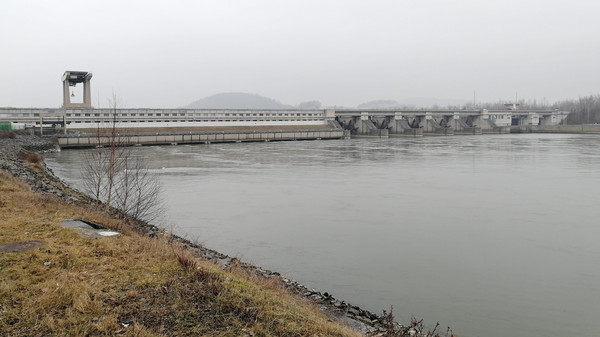
Dams built on the Danube severly impact the river. They not only block the movement of fish, but completely change the river dynamic and alter the sedimentation processes – they stop the movement of fine particles downstream, changing the riverbed and preventing the very establishment of islands.
This is why LIFE WILDisland has recruited the international power companies UNIPER and Verbund, who have committed to carry out several best practice island restoration actions in riparian sections, altered by hydropower in Upper Danube.
This is why the LIFE WILDisland project provides for the restoration of islands in hydropower reservoirs, as follows:
- Mouth of Ussel river (Uniper, DE) - embankment removal and sidearm reconnection;
- New island in Ingolstadt (Uniper, DE) - side branch restoration;
- Langau-Abwinden (Verbund, AT) - dredging, side-arm reconnection and embarkment removal;
The main objective is the dynamization of the landscape to initiate river dynamic processes and to create a dynamic riverine landscape with high value for alluvial softwood forests. The planned actions will result in the creation of a new natural island, which will be strictly protected under national law and managed without intervention.

WILDislands and sedimentation
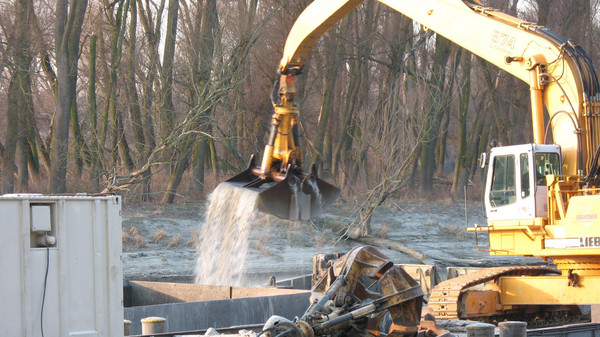
The long-term practices to control and manage the river current in order to facilitate navigation and prevent flooding, has deeply altered the natural state of Danube. Side branches have been straightened, meanders have been cut off and these hydrological alterations have induced increasing sedimentation in the “old” meanders.
As a result, the waterbodies in the old meanders more and more disappear, the valuable islands get lost, and the hydrological regime in whole areas is impacted through reduced water discharge.
This is why LIFE WILDisland provides for actions to improve the water regime of some islands through dredging and re-activation of side branches to prevent the disturbance of softwood gallery forest. Such action will be carried out in Middle and Lower Danube (see map) by Voijvodinasume and DDBRA:
- Gornje Podunavje, islands RS84 and RS85 (Vojvodinasume, SR) - dredging and forest management;
- Danube Delta, islands RO164; RO109, RO43, RO99 (DDBRA, RO) - main channel and cut-off meander restoration;
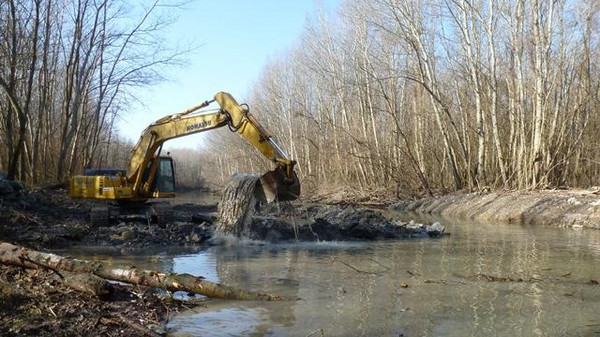
WILDisland on the interface with forestry
The transformation of natural floodplain forests to intensive poplar plantations in the past has significantly impacted natural forests. Commercial forestry totally alters the species composition and structure of the affected forest communities. The technological activities and short lifespan of intensive poplar plantations not only disrupt characteristic and valuable micro-habitats such as small wetlands and migratory corridors along the Danube, but also reduce the genetic diversity of the populations of native tree species.
This is why converting existing poplar plantations into stable mixed forests of autochthone species will increase the resilience of the forest ecosystem to biotic and abiotic factors, increase ecological value and general beneficial forest functions and increase biodiversity. The planned activities include removal of non-native trees species, planting native tree species (e.g. domestic poplars, willows, oak, ash, elm, grey alder, etc.) and non-invasive follow-up management.
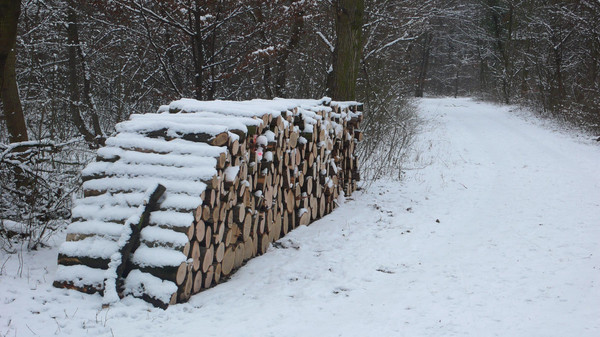
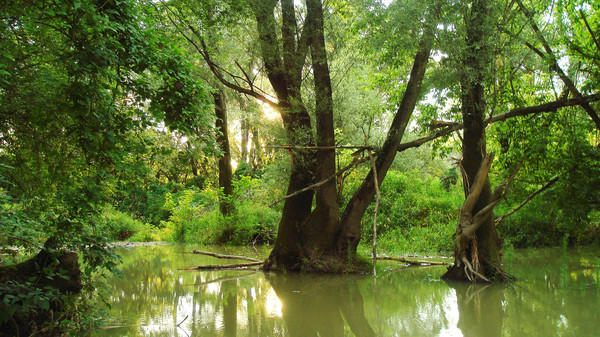
Such forest restoration actions, dedicated to softwood riparian forests will be carried out in the Middle and Lower Danube, implemented by nature conservation entities and park directorates: BROZ, FHNPD, DINPI, DDNPD, Kopacki rit, Persina, DDBRA, but also three commercial forestry companies: Hrvatske sume, Vojvodinasume, Romsilva in a total of six countries:
- Sap (BROZ, SK) - reforestation;
- Kližská Nemá (BROZ, SK) - natural forest rejuvenation;
- Erebe islands and Véneki islands (FHNPD, HU) - invasive species management;
- Táti islands (DINPI, HU) - invasive species management;
- Debrina island (DDNPD, HU) - natural forest rejuvenation; invasive species management;
- Kopacki rit, island HR21 (JUUP/HRsume, CR) - transforming forest plantations;
- Gornje podunavje, new islands RS84, RS85 (Vojvodinasume, SR) - forest management actions;
- Palets island (Persina NPD, BG) - invasive species management;
- Danube Delta, islands RO164 (Romsilva, RO) - forest management actions;
Danube WILDisland Ramsar Regional Initiative
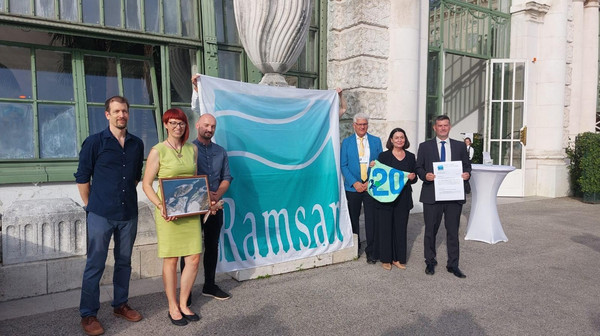
The EU Commission stresses good practice Ramsar Regional Initiatives to achieve a high level of integration between the Convention and EU directives and contribute to improving wetland management in line with goals adopted by EU member states. This is why the establishment of a Danube WILDisland Ramsar Regional Initiatives was set at one of the main long-term conservation goals of the LIFE WILDisland project.
The application was prapred by the project team and formally submitted by the International Commission for the Protection of the Danube River (ICPDR) in December 2023.
The Danube WILDisland Ramsar Regional Initiative was formally endorsed at the 63rd meeting of the Ramsar Standing Committee (3-7 June 2024; Gland, Switzerland), with a symbolic handover in the frame of the EUSDR Annual Forum on 20 June 2024 in Vienna, Austria.
Thanks to funding secured by the Convention on Wetlands’ Core Budget and the Federal Ministry for the Environment, Nature Conservation, Nuclear Safety and Consumer Protection, Germany, the following actions will take place by 2027:
- establish a Danube WILDisland RRI Coordination Unit as a new Lower Danube regional office of the DANUBEPARKS in Persina Nature Park, Bulgaria;
- elaborate long-term Strategic and Communication plan of the RRI;
- further promote and strengthen transnational cooperation through a cross-border and internal on-site visits, workshops, and meetings;
- initiate joint pilot measures for technical planning, execution, monitoring or direct conservation measures and awareness campaigns;
- increase the visibility and recognition of the Danube WILDisland RRI, wetlands and their ecosystem services;
- position the newly established Danube WILDisland RRI firmly on the international scene, mobilizing wide acknowledgment of its contribution to wetlands conservation and potential for further development and replication;

Danube WILDisland Ramsar Regional Initiative supporters
The Danube WILDisland Ramsar Regional Initiative is hosted by:




